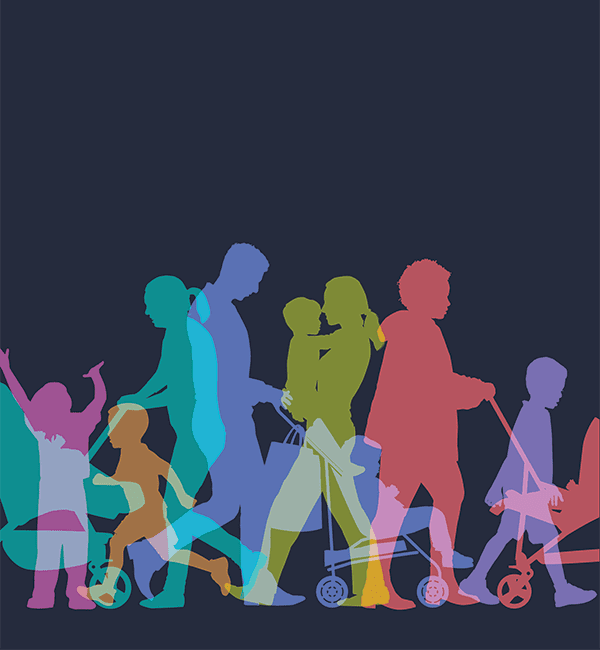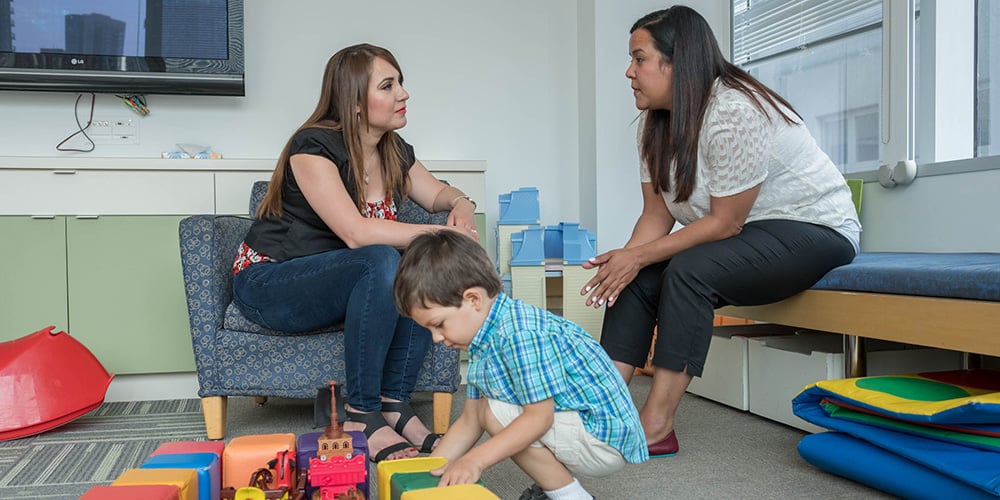Hey parents and teachers! We at Erikson’s Center for Children and Families want to share a rallying cry: You are truly appreciated! It’s easy to take the roles of caring for and working with children for granted. But the challenges are real, and the number of variables can be head spinning. Just when you’ve got a functional routine working at home or in the classroom, it’s time for a holiday or spring break. Distractions and disruptions like this are everywhere. When they happen, here are some strategies for reducing stress.
As parents and teachers, we often expect “perfection” from ourselves. The desire to do everything “just right” or have the “best” solution.” But at home or in the classroom, this isn’t realistic or even necessary for offering children support and giving them what they need. The truth is that “good enough” is actually great. Why? It gets the job done. It allows children to learn from their own experiences. And we, the adults, deservedly can relax a little. Often, this translates into our being able to be more present and attentive—which is what kids want. Win/win!
At Erikson’s Center for Children and Families, we see how keenly kids observe things. They read the room and take in information left and right. When there’s a change in a caregiver’s mood, children are acutely aware of it. And this can lead to confusion. Why? Children will make up their own story to explain it. What did I do to make mom/dad/my teacher act like that? Because children are necessarily egocentric, they’ll often think they must’ve done something. By being aware of how children look at things, we can get ahead of inaccurate stress-inducing narratives by sharing what’s really happening so kids aren’t left to guess.
When stressful situations begin to unfold, we can help kids name it. We can open the door for children to ask questions. Create safe spaces. And give them permission to talk about what’s occurring. It’s empowering for a kid to be involved and to be able to speak. And by helping children name what an experience is to them, it empowers us to first, get to the real issue, and second, decide what changes we might affect to respond.
Ironic, isn’t it, that when children have a holiday or spring break, caregivers often have to go into overtime. Maybe this is a good moment to revisit that rallying cry… “You are truly appreciated!” The point isn’t to gloss over the stress, but to acknowledge that you are doing your best. It’s good to simply remember that we learn to parent by doing it. Teachers become more effective through hands-on practice. When issues arise, solutions can be found. Erikson Institute’s Center for Children and Families is a powerful resource that’s here when you need it.
Adult-child attachment relationships are truly individual and built over time. When disruptive behavior emerges, Erikson Institute’s Center for Children and Families combines deep developmental research with practical onsite play therapy to unlock a situation. Our goal is long term, positive change. We’re proud to have helped hundreds of families work through disturbances and issues in a way that’s welcoming and empowering. Because when you seek support, the last thing you need is more stress.

Join the Erikson family with monthly news + events updates shared by academics, community members, and families.
